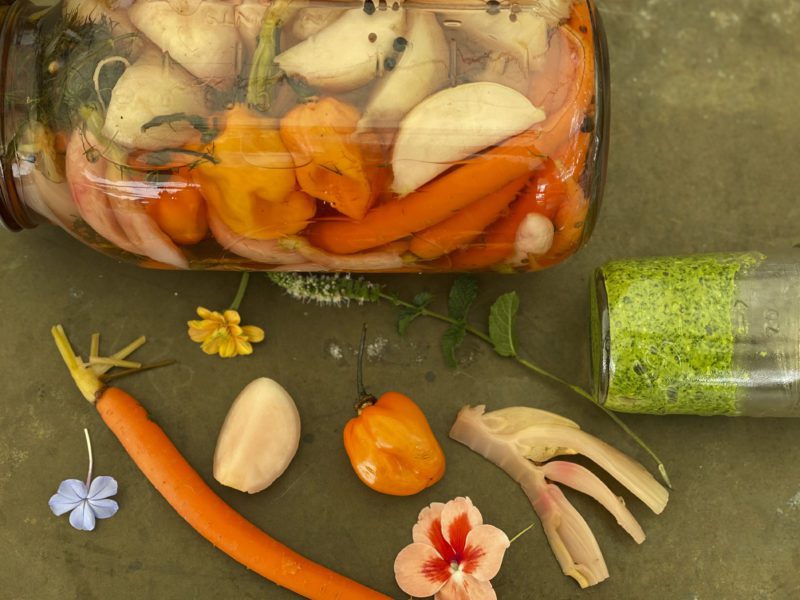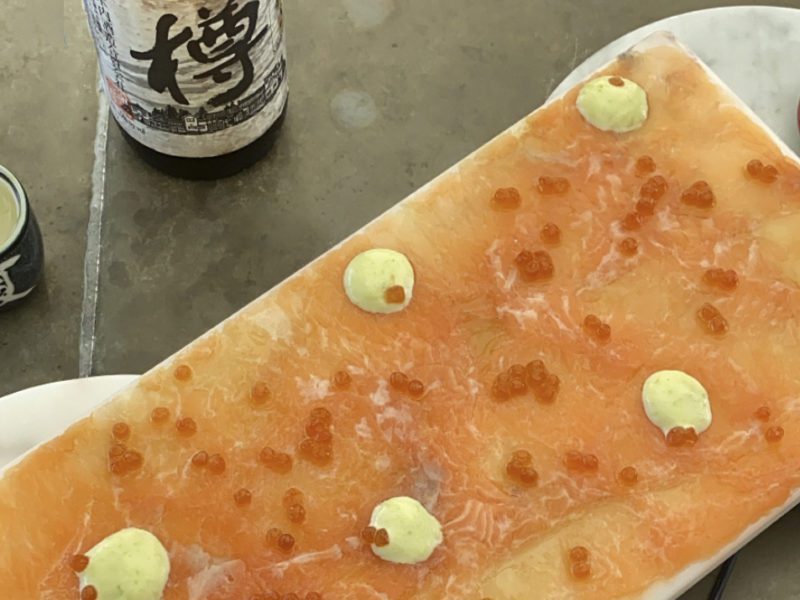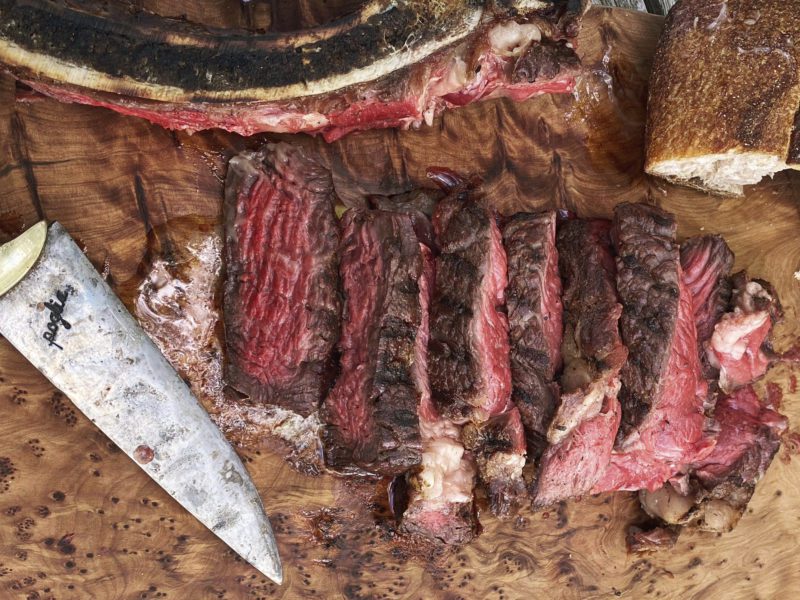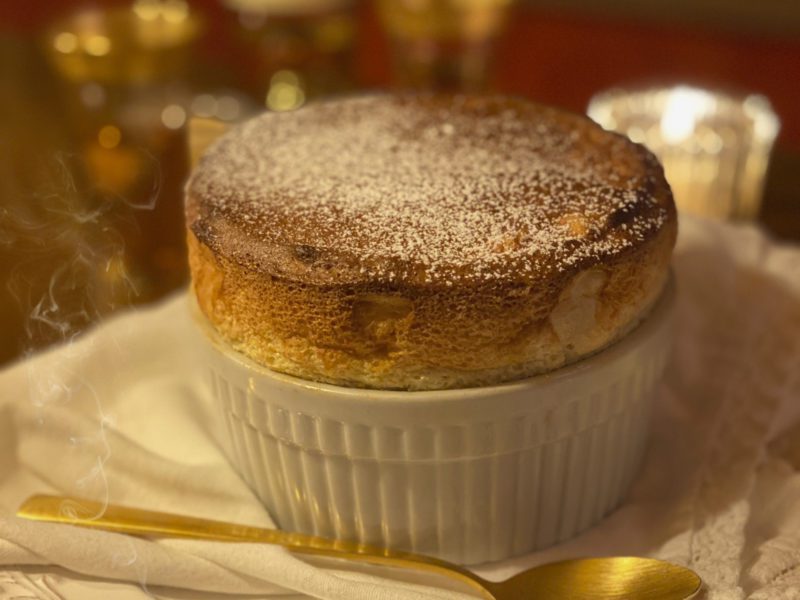Featured Posts
Six Course Feast
APPETIZERS

INGREDIENTS
Pickles:
8 cups cut, sliced, and/or peeled vegetables: I used radish, carrot, turnip, fennel and some petite habaneros
8 1⁄2 cups water
3⁄4 cup salt
1 cup distilled white vinegar
2 cups sugar
Spices/herbs of your choice: I used 1 bay leaf, 2 teaspoons coriander, 1 teaspoon black pepper, 1 teaspoon white pepper
Small bunch fresh herbs: I used dill
Radish Leaf Pesto:
3 cups radish leaf (loosely packed)
30 millileters extra virgin olive oil
19 grams pine nut (untoasted)
15 grams parmesan (finely grated)
salt
*you can also swap out the radish leaves for carrot tops
RECIPE
Prepare the vegetables. Wash, peel, and chop if necessary into smaller pieces. I like to scrub my vegetables with a brillo pad (or the rough side of a dish sponge) in cold water to clean + prep them. Boil harder vegetables in well salted water for 3 minutes.
Prepare the brine with 6 cups of water and ¾ cup salt. Add vegetables to the brine, cover, and allow to sit overnight in the refrigerator.
For the pickling liquid, combine the remaining water, vinegar, sugar, and selected spices in a pan. Bring to a boil and stir until all the sugar has dissolved. Remove from heat and allow to cool.
Remove vegetables from brine and transfer to clean glass jars. Pour prepared pickling solution into jars, scatter with some fresh dill, and seal.
Store jars in a cool, dark place and allow to marinate for at least 24 hours. The vegetables taste best after a full 2-3 weeks of pickling.
Coarsely chop the radish leaves. Blend all the pesto ingredients in a small food processor until they come together, and the desired texture is achieved. Option to add anchovies and/or garlic for a more robust flavor. Good on pasta, or toast with a squeeze of lemon.
I suggest a pickle plate with some bread, pesto, and posies (flowers) thrown around for garnish. Forage for something—you never know what you’ll find in your backyard, or in a secret alley in the middle of nowhere. Make sure the mushrooms aren’t poisonous.
Slabbed Salmon Sashimi with Cured Ikura

Serves 2 – 4
This is a paper fine pounded salmon sashimi dish with cured ikura (salmon roe) and wasabi mayo. I used a marble slab I found in my pantry. It’s a surprisingly easy dish to make once you have all your sauces prepped, and sure to impress guests.
INGREDIENTS
Salmon Sashimi:
6 ounces sushi grade salmon
Salt
Cured Ikura:
4 ounces salmon roe
1 tablespoon light soy sauce
½ tablespoon mirin
½ tablespoon sake
¼ cup dashi *see recipe in sauces, you can prep ahead of time or skip this ingredient
RECIPE
Choose the slab or plate you’ll be serving the dish on—it will act as the blueprint for your final shape. Throw it in the freezer.
Mix ikura sauce ingredients together in a small bowl, submerge the ikura. Wrap and cover for at least two hours, or overnight.
Slice 1/2 inch pieces of salmon. Slightly overlap the slices on a piece of saran wrap, on top of your chilled serving plate. Cover with a second piece of saran and seal to make a barrier that encapsulates fish.
Use the flat side of a meat tenderizer and beat the fish with even, medium pressure until the salmon is one unit, fills the plate, and is just translucent. You want the plate to be large enough that the fish can be pounded thin, and large enough to share.
Slide the pounded fish off the plate, remove the top piece of saran and flip back onto the plate. Remove the other piece of saran. This is a restaurant technique I learned from my chef mentor. Once you do it a few times it becomes second nature, and is a great party trick.
Sprinkle with flakey salt, Maldon preferred.
Lightly drizzle finishing glaze over fish. Pipe or spoon on pillows of wasabi mayo—scatter in any way you want. This is your Basquiat moment.
Sauces & Marinades
Dashi:
5 cups water
5” piece kombu
½ cup bonito flakes
Boil water with the kombu. When it comes to a boil, add the bonito, remove from the heat, and strain so you have a clean broth. Let cool before portioning out for the ikura cure.
You will have leftover dashi which is great for a Japanese style soup base (soba or miso). Always good to have in the fridge.
Finishing Glaze:
1 tablespoon mirin
1 tablespoon sake
1 tablespoon sesame oil
1 tablespoon soy sauce
Mix together in a small bowl.
Wasabi Mayo:
¼ cup mayo
1 tablespoon fresh wasabi
1 ½ tablespoon sake
Whisk together in a small bowl. Fill pastry bag with small round tip. You can also spoon on and nix the pastry bag.
Mains

Serves 4
INGREDIENTS
400 grams spaghetti
1500 grams zucchini (small to medium)
200 grams finely grated Provolone del Monaco “caciocavallo” (or any mildly aged provolone)
1 knob unsalted butter
Olive oil
Basil
Salt & pepper to taste
*I like using a simple digital scale (always)
RECIPE
Bring a large pot of salted water to boil. Cut zucchini in thin slices (~ 2mm). I use a mandolin for quick, even slicing.
Coat a large sauté pan with olive oil on medium heat, enough to lightly fry. Sauté zucchini slices. Make sure heat isn’t too high—you want the sweetness to come out before getting lightly golden brown and fried.
When the pot of salted water is boiling cook pasta (~ 10 min). You want it al dente. Test along way if needed. Strain and save the pasta water.
Puree half of the sauteed zucchini with ½ cup pasta water in small blender. Keep increasing pasta water amount to match the thickness you desire. You may end up using almost a full cup.
On low heat, in the same large sauté pan you cooked zucchini add pasta, zucchini puree, grated cheese, knob of butter and delicately mix just until it all comes together into a creamy sauce. Weave in the zucchini slices.
Plate, salt & pepper (I like Maldon for finishing and fresh ground pepper). Garnish with hand torn basil.
Allora, spaghetti is served!
Simple Steak, Spanish Style

Serves 2
INGREDIENTS
Dry aged, thick-cut bone-in ribeye, at least 1 1/12 to 2 inches thick (can use a different cut too, chef’s choice)
Kosher salt and freshly ground black pepper
Vegetable oil (for grill top)
Crusty bread to scarpetta the jus
RECIPE
Generously season steak with salt, everywhere, including fat cap. Put steak on a wire rack set in a rimmed baking sheet and refrigerate, uncovered, overnight to dry out the exterior.
Set oven to the lowest temp possible, mine was 170°F. Get steak partially to temp in the oven (90-100°F internal). Time all depends on the thickness of the cut. A 2-inch cut, for instance, will take about 20-30 minutes. Cooking time can vary dramatically depending on many factors, so check often. You can adjust internal temperatures based on desired final temp (rare, medium, well). Here we’re shooting for rare, with a final internal temp around 125°F.
Meanwhile, start your grill. Build the biggest fire you can in a charcoal grill. I like using a mix of charcoal and wood. Japanese binchotan contributes great flavor + heat if you can get your hands on it.
When the grill is flaming hot, quickly oil grate, and transfer steak to the hottest part. Cook, turning frequently, until crisp and charred, 6-8 minutes, making sure to get the fat cap to melt too.
Transfer steak to cutting board, tent with foil, and let rest for 10 minutes. I like using a cutting board with a rim around the edge to catch the jus when cutting. The internal temperature will continue to rise about 5-10° while resting. Plan on taking the steak off grill at no more than 120° to account for that resting rise.
Cut steak against the grain in whatever slice thickness desired.
Transfer to serving plate and drizzle with jus. Serve with crusty bread and a hunk of butter. Pairs well with Rioja and flamenco.
Desserts
Barbaresco Boozed Cherries with Mascarpone Clouds

INGREDIENTS
Cherries
1 ¼ cups Barbaresco (can substitute for any red wine)
½ cup + 1 tablespoon sugar
1 orange rind (like a cocktail twist)
1 pound cherries (sweet or mix of sweet n’tart, pitted)
Splash of Kirsch
2 teaspoons balsamic vinegar (I used an aged one from Modena)
2 teaspoons tapioca starch (optional thickening agent)
Clouds
1 cup mascarpone
1 cup heavy cream (can use additional to thin out if needed)
1 tablespoon honey
Pinch of sea salt (to taste)
RECIPE
Put the sugar, cherries, wine, orange rind, and vinegar in a wide saucepan (I used a heavy-bottomed large stainless-steel). Bring up to a boil on medium-high heat, stir to make sure the sugar dissolves in and doesn’t burn. Once boiling, reduce heat to a low boil and cook for 10 minutes, stirring frequently.
While the cherries are cooking, mix the tapioca starch with a touch of water until fully dissolved. Add a splash of wine, stir to make uniform. Set aside your slurry. You may not want/need to use this.
When cherries are ready check the consistency. If you want it a bit thicker mix in the slurry and bring to a boil for about a minute.
Turn heat off, add the splash of Kirsch and delicately stir.
Take the mascarpone out of refrigerator and soften enough to whip. Place in a stainless bowl and stir to make it more liquid. Separately in a stainless bowl, whisk the heavy cream until it just begins to thicken. Slowly add the lightly thickened cream to the mascarpone along with the honey and sea salt. Hand whisk to light pillows.
Build your dish however you like. I like layering it like a parfait, using a sundae dish: cream on the bottom, cherries, a generously spooned cream on top. For crunch, layer in amaretto cookies or toasted almonds. Garnish with whatever catches your fancy—an herb, flower, pink peppercorns.
Serve hot or cold.

Serves 4
INGREDIENTS
2 tablespoons soft butter
4 tablespoons sugar
5 egg yolks
1/3 cup sugar + 1 ½ teaspoons
¼ cup Grand Marnier + 1 ½ teaspoons
1 tablespoon orange rind
pinch of salt
7 egg whites
¼ teaspoon cream of tartar
confectioner’s (powdered) sugar
RECIPE
Preheat the oven to 425 °F, on convection.
Grease the inside of two 16-ounce soufflé dishes with the soft butter (each soufflé serves two). Coat with sugar, tipping and shaking to spread evenly. Turn the dish over and knock out the excess sugar. Set both aside.
Whisk the egg yolks in a stainless bowl until they are well blended. Slowly add the 1/3 cup sugar and continue whisking until the yolks become thick and pale yellow. Set bowl over a barely simmering pot of water to heat the egg yolks (mimicking a double boiler), stirring gently and constantly with a wooden spoon or rubber spatula, until the mixture
slightly thickens and becomes just hot to touch. Remove from heat.
Stir in the Grand Marnier, orange peel, and pinch of salt. Immediately transfer to a clean, large bowl and put into an ice bath. Stir the mixture until very cold. Remove from the ice and set aside.
In a stand mixer, on medium-high speed, beat the egg whites and the cream of tartar until they form stiff, unwavering peaks. Using a rubber spatula, stir a large spoonful of beaten egg white into the egg-yolk mixture to lighten it up. Gently fold the remaining egg whites into the mixture.
Pour mixture into the prepared dishes. Smooth the top of the soufflé with an offset spatula or knife. Make a decorative cap by sliding your finger all the way around the edge of the rim.
Bake at 425°F on the middle shelf of the oven for 2 minutes, then reduce to 400°F and bake for another 8 minutes. C’est fini when the soufflé is puffed high above the top of the rim and browned on top.
Dust with confectioner’s sugar over a fine mesh strainer. Serve immediately. Soufflés deflate.
Bon appetit!












